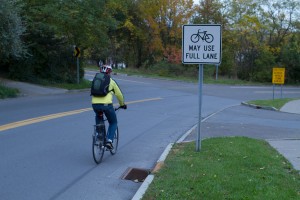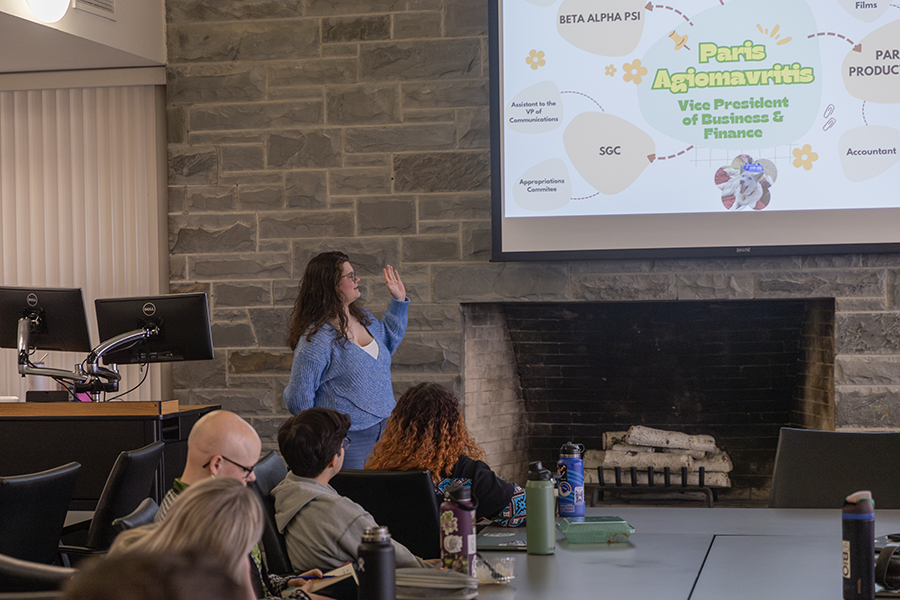The landscape of downtown Ithaca may be changing in the near future as the city plans to create a more pedestrian- and bicyclist-friendly network of roadways.

The plan is scheduled to be completed and accepted by the city this December and implemented over the next few years.
The City of Ithaca is constructing a plan that will redesign some downtown streets into bicycle-and pedestrian-safe roadways. The plan should be completed before the end of the year and implementation will begin once funds are available.
The plan correlates with new census data ranking Ithaca as the U.S. city with the highest percentage of walking commuters per capita. The U.S. Census Bureau released the American Community Survey in late September, and Ithaca was highlighted as a city with carbon-neutral commuters. American workers with no carbon footprint — who walked or bicycled to work — account for only 3.5 percent of the country’s population. However, Ithaca topped the chart with 15.1 percent of residents walking to work.
Fernando de Aargón, executive director of Ithaca-Tompkins County Transportation Council, said aspects of ITCTC’s concept may be included in the city’s plan, specifically how bicycle boulevards can be implemented into present infrastructure.
“It basically takes what are already low-volume streets and sort of tweaks them to be more bike-friendly,” he said.
The Cayuga Waterfront Trail Initiative, established in 2000 to develop trails along the waterfront, has built a few miles of trail in Cass Park as well as a trail connecting the Ithaca Farmers Market to Stewart Park. The final phase of the initiative is to connect Cass Park to the market in the next few years.
“The buzz words these days are ‘active transportation’ — a way that you get where you’re going, either biking or walking or rollerblading or whatever else you do,” Rick Manning, program coordinator of the initiative, said.
But Manning said safety is still a concern for pedestrians. He noted some “dicey” intersections along Route 13 and said drivers’ respect of pedestrians continues to be an issue.
Jeanne Leccese, coordinator of the Creating Healthy Places program with the Human Services Coalition of Tompkins County, worked with Manning on the plan and said Ithaca already has a good trail system in place.
There are two trail systems that are used heavily by campus commuters, Lecesse said. East Hill Recreation Way to Cornell University and South Hill Recreation Way to Ithaca College are both used frequently.
“Another commuter route that will be coming to fruition, hopefully soon, is the Black Diamond Trail, and that will provide a connection from the town of Ulysses into downtown Ithaca,” she said.
Despite these improvements, Manning said, Ithaca could still develop a safe and user-friendly infrastructure to encourage more residents to walk or bike as their main form of transportation.
“The whole culture of walking and biking is still not quite as far advanced as it could be,” he said.
There are two main components needed to transition a city street into either a bicycle boulevard or a “calmed” roadway.
Johnson said some roads may require traffic calming devices, which include reduced speed limits, speed bumps and other measures that allow bicyclists to ride with drivers rather than alongside them.
If the plan is finalized, the city will need to find money for the project, Johnson said. Since federal funding is competitive and involves a lengthy process, it is likely that implementation will be gradual.
“One of the benefits of this type of treatment is we can start off having a somewhat small infrastructure investment, and do more in the way of signs and pavement markings and not as much in the way off traffic calming devices because they end up costing more money,” Johnson said.







